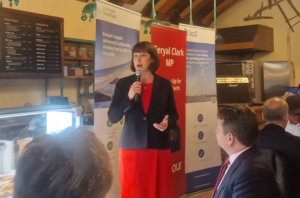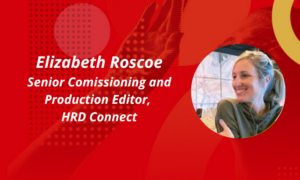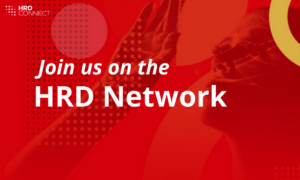Organisational purpose as a sustainable model for gaining a competitive advantage
- 4 Min Read
Graham Abbey is the Managing Director for BRIDGE in Europe, Middle East & Africa and leads the client practice in Purposeful Advantage. He joins HRD Connect to discuss why a lot more organisations are now looking at organisational purpose as a sustainable model for gaining a competitive advantage, and illustrates some of the most pioneering […]
- Author: Rachel Montgomery-Young
- Date published: Jan 11, 2018
- Categories
Graham Abbey is the Managing Director for BRIDGE in Europe, Middle East & Africa and leads the client practice in Purposeful Advantage. He joins HRD Connect to discuss why a lot more organisations are now looking at organisational purpose as a sustainable model for gaining a competitive advantage, and illustrates some of the most pioneering work going on in this area.
BRIDGE have been developing the leaders of some of the most progressive and respected organisations in the world. What are the emergent practices for developing tomorrow’s leaders?
Uncertainty and volatility are at the heart of the challenge that leaders are facing today. In developing leaders to respond to this, we are seeing a move away from attempting to define a single approach to leadership, towards organisations encouraging their leaders to build their own developmental practices.
In creating Leadership 2.0, we have found a deep need to be helping leaders progress in their ‘Vertical Development’. Organisations are exploring how to use the natural process of adult maturity, as it enables senior leaders to work competently with the complexity of the current business landscape. Building these practices has seen a rise in the interest in disruptive ‘interventions’ to accelerate this form of learning. These typically involve leaders taking on their most difficult business and societal challenges and using this context to create different ways of leading others and leading themselves.
Why is purpose important? How does an organisation embed it in to the culture and make it inclusive for everyone?
When you are navigating uncertainty having a fixed point ‘on the horizon’ is extremely helpful. This is one of the benefits leaders are finding when they begin to direct their organisations more purposefully. We are in a time when trust in ‘Big Business’ has been falling, while many of the problems of our society remain unresolved. Enlightened business leaders are ‘stepping up’ to this dual challenge and using purpose to inspire their organisations to respond – ethically, sustainably and purposefully.
Purpose brings meaning to what we do. Making workplaces meaningful is central to creating places where everyone can be inspired and engaged – able to bring their best in serving their customers and the wider world. Finding purpose is a process of unearthing what is already deeply within organisation, often hidden or forgotten. Rediscovering and connecting to purpose is what enables the organisation to become alive – so ‘embedding’ can be somewhat of a misleading term.
How does purpose work in practice? What does success look like for your clients?
In practice, we explore, experiment and learn with our clients. Having unearthed their purpose, we encourage leaders to test out ways in which their purpose could be a source of sustainable advantage AND positively impact the issues in society they are best positioned to influence. This is a creative approach – experimenting and learning – that often releases tremendous energy.
Success depends on context: for Lindt has been a radical shift in their employee engagement. They have noticeably improved engagement scores and retained a top 50 Great Place to Work position for the past 3 years. The turnover of employees has decreased to 16% in 2 years, and 91% of them say Lindt is a great place to work.
With other clients such as Tate & Lyle, it has been the accelerated development of new products that respond to the need for healthier lifestyles; while VF Corporation have been exploring a purpose that will raise the ‘metabolic rate’ of their iconic brands, such as The North Face, Vans and Timberland.
How do BRIDGE help organisations evolve, given the degree of uncertainty and complexity in today’s world?
We approach our work with organisations and their leaders from three angles – Leadership 2.0, the Organisation of the Future and Purposeful Advantage. In practice, we co-create, with our clients, breakthrough solutions to meet their specific needs, recognising that the evolution of organisations and the evolution of their leaders are often deeply connected – actually most often inseparable.
Understanding ‘the why’ for both can often be the disruption that enables businesses to respond successfully to today’s uncertainty and complexity.









